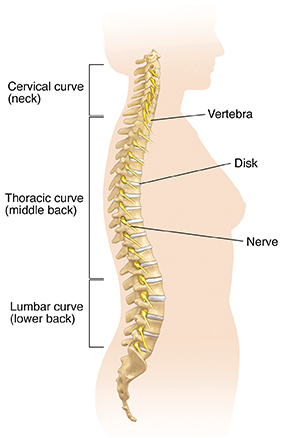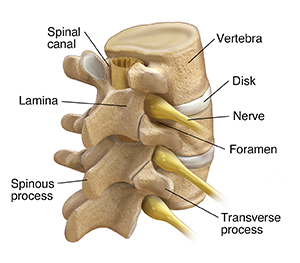The spinal column is a stack of bones (vertebrae). They are separated by soft pads of tissue (disks). In the middle of each of these bones, there is a canal (the spinal canal) that runs top to bottom. Running through the spinal canal is a long bundle of nerves and nerve cells called the spinal cord. These nerve fibers carry signals between the brain and body. The spinal cord, just like the brain, is surrounded by the cerebrospinal fluid and protective layers called meninges.
The parts of the spine
The spine is made up of these parts:
-
Vertebrae. These are the 24 bones that connect like puzzle pieces to make up the spine.
-
Lamina. This is part of each vertebra. Together the laminae form the back of the spinal canal.
-
Foramen. This is a small bony opening. It's where a nerve, on each side of the spinal cord, leaves the spinal canal.
-
Transverse process. This is the wing of bone on either side of each vertebra.
-
Spinous process. This is the back part of each vertebra you can feel through your skin.
-
Disks. A disk lies between each vertebra and acts as a cushion.



